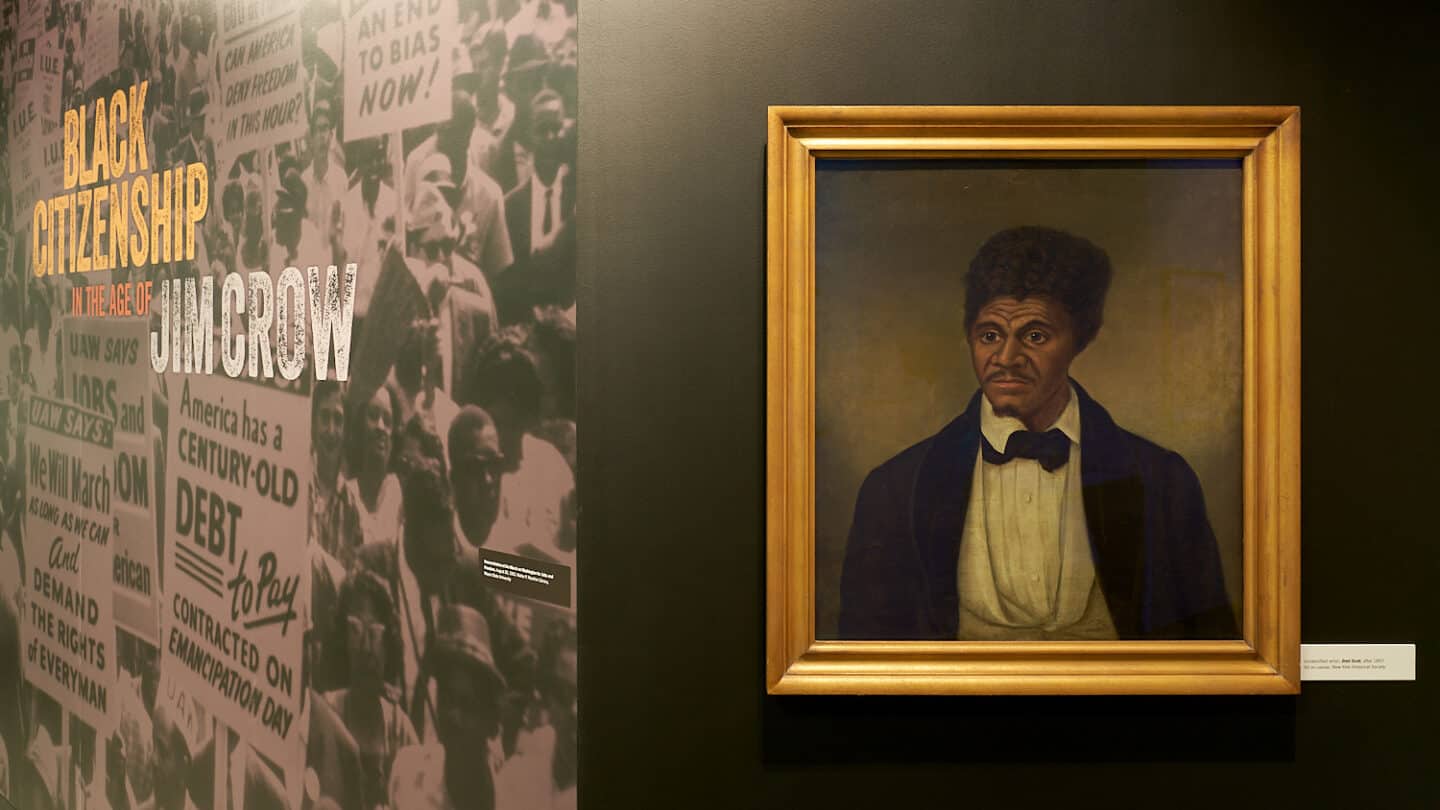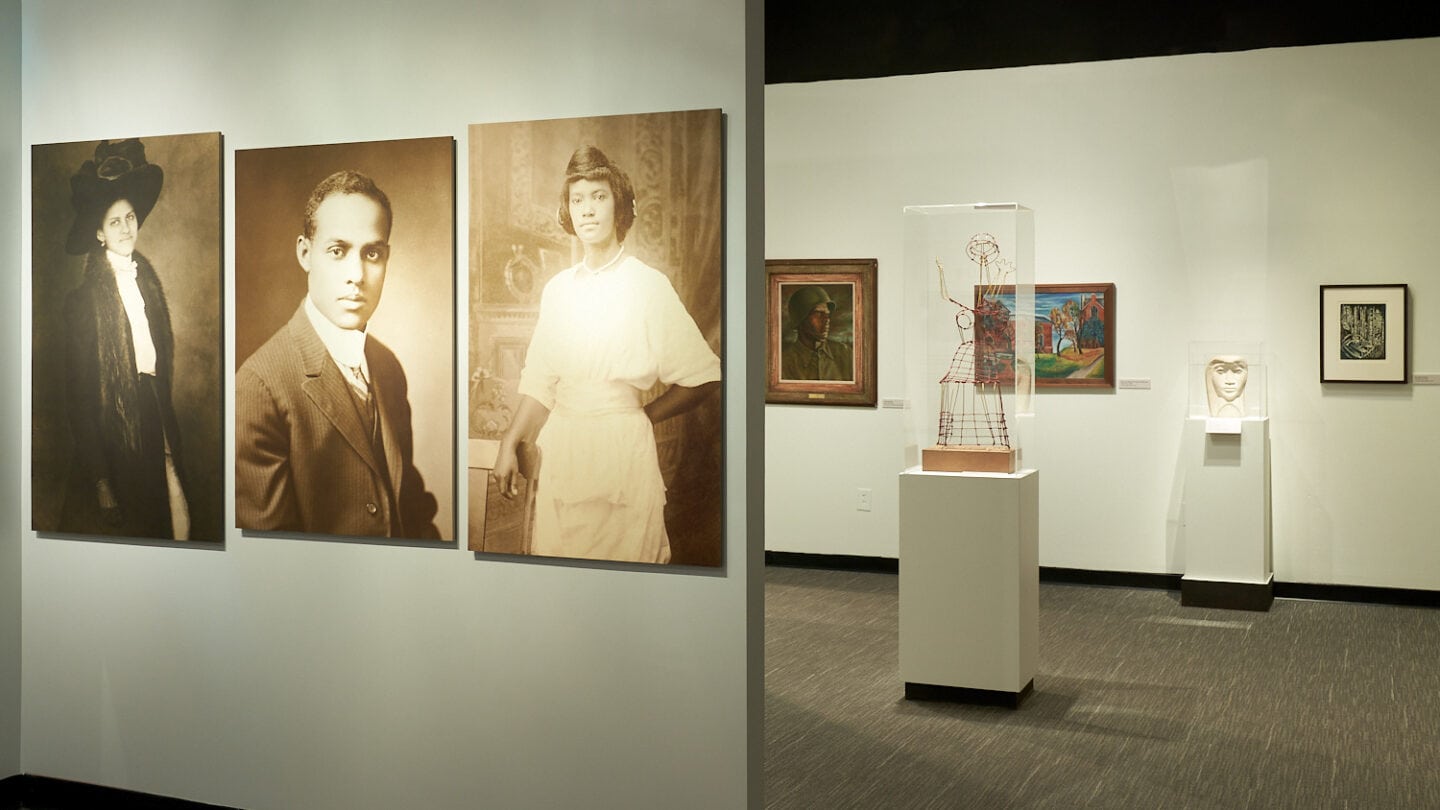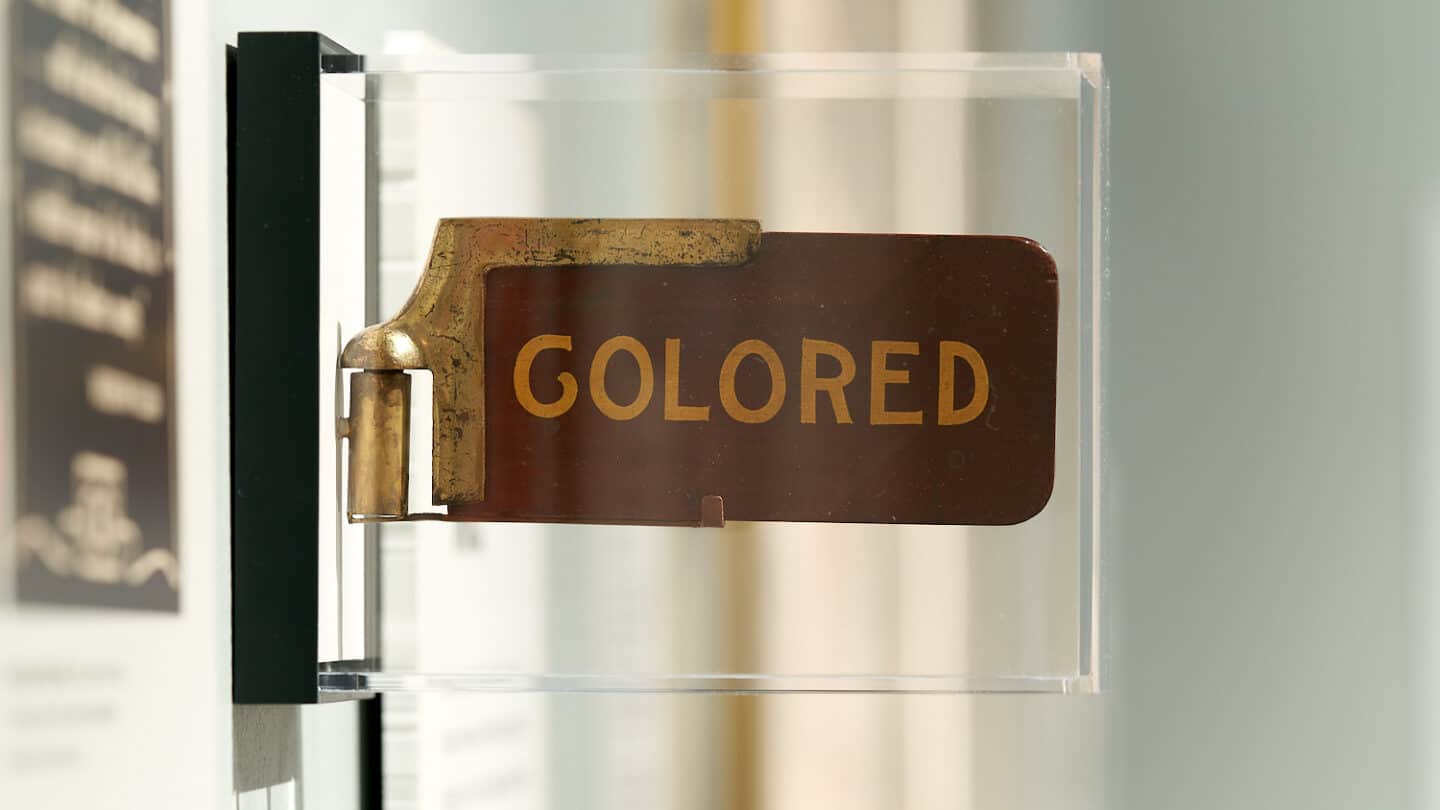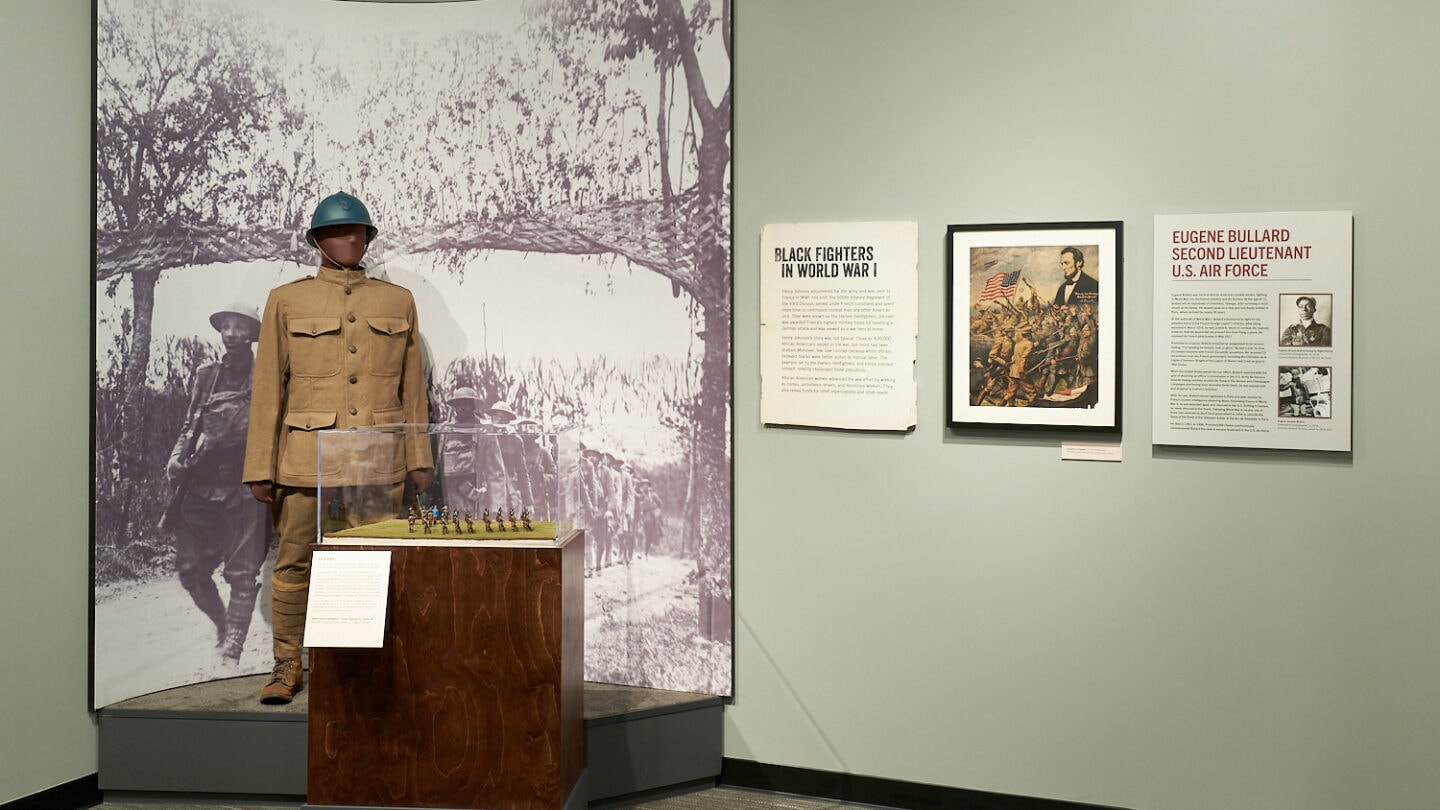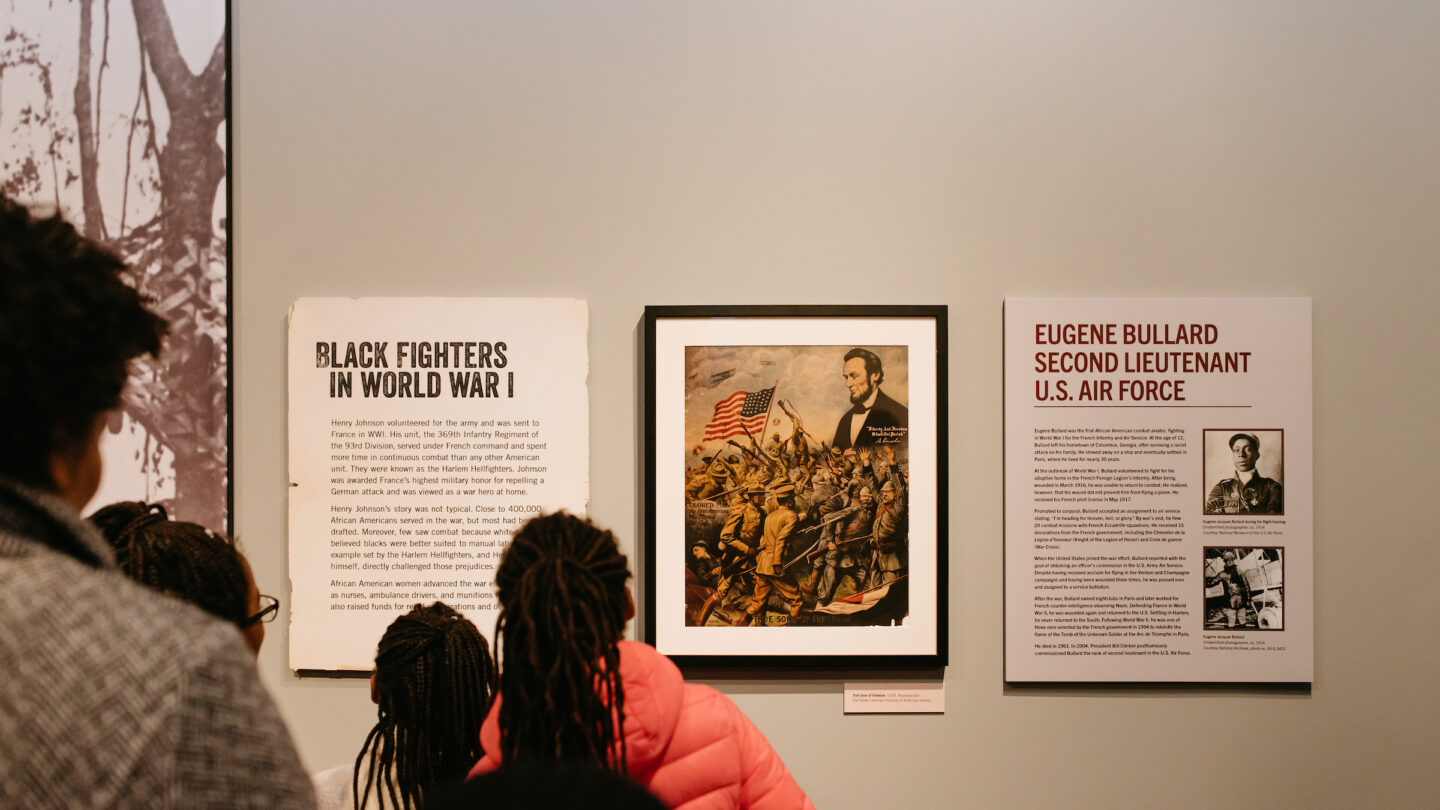Black Citizenship in the Age of Jim Crow
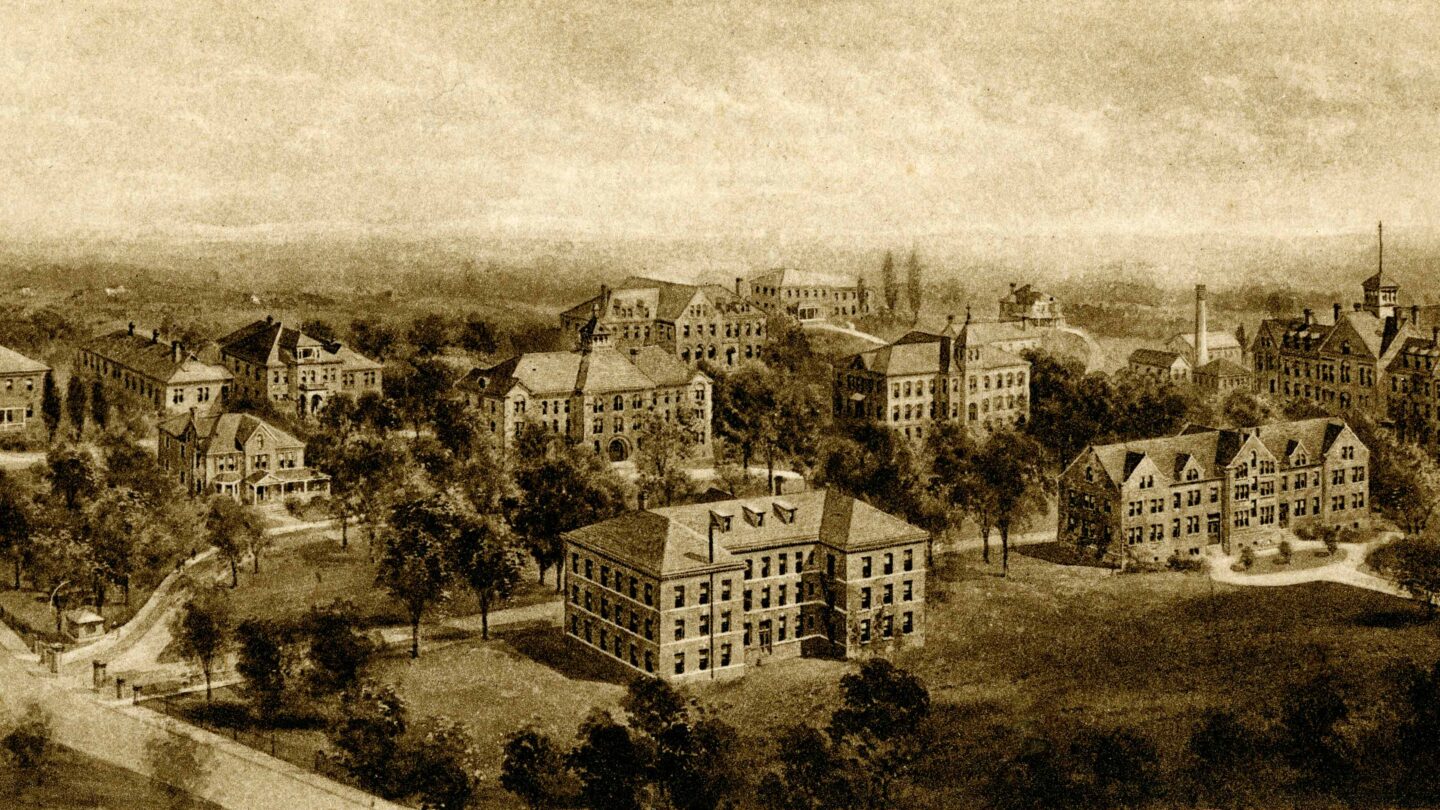
View of Spelman College campus with Giles Hall at right and Rockefeller Hall at center. Atlanta Historic Postcard Collection, VIS 93.325.001
Black Citizenship in the Age of Jim Crow explores the African American struggle for full citizenship and racial equality that unfolded in the 50 years following the Civil War. A traveling exhibition created by the New-York Historical Society in partnership with the National Museum of African American History and Culture, Black Citizenship is on view through February 28, 2021, at Atlanta History Center.
Unique to the Atlanta leg of the exhibition’s journey are artifacts and stories related to our city’s unique role in African American history. Alongside the work of Black legislators, journalists, soldiers, and organizers, the artistic and academic revolutions sparked by the Atlanta University Complex’s creation is highlighted.
Atlanta History Center is excited to offer complimentary admission to college students during the month of February. To celebrate the history currently being made on Atlanta’s college campuses—and at campuses across the South—we’re taking a look at the foundation of the Atlanta University Complex and its impact on the national academic landscape.
The Atlanta University Complex
In the wake of the Civil War, more than 4.5 million Black Southerners looked to start new lives as full citizens of the country they labored for generations to build. Some fled north, hoping for new opportunities to work, be educated, and escape violence they suffered in the South. Others made a home where they were, farming rural plots to earn a living for themselves and their families. A large number believed they could achieve progress in Southern cities and towns, especially those promising jobs, schools, and established Black communities.
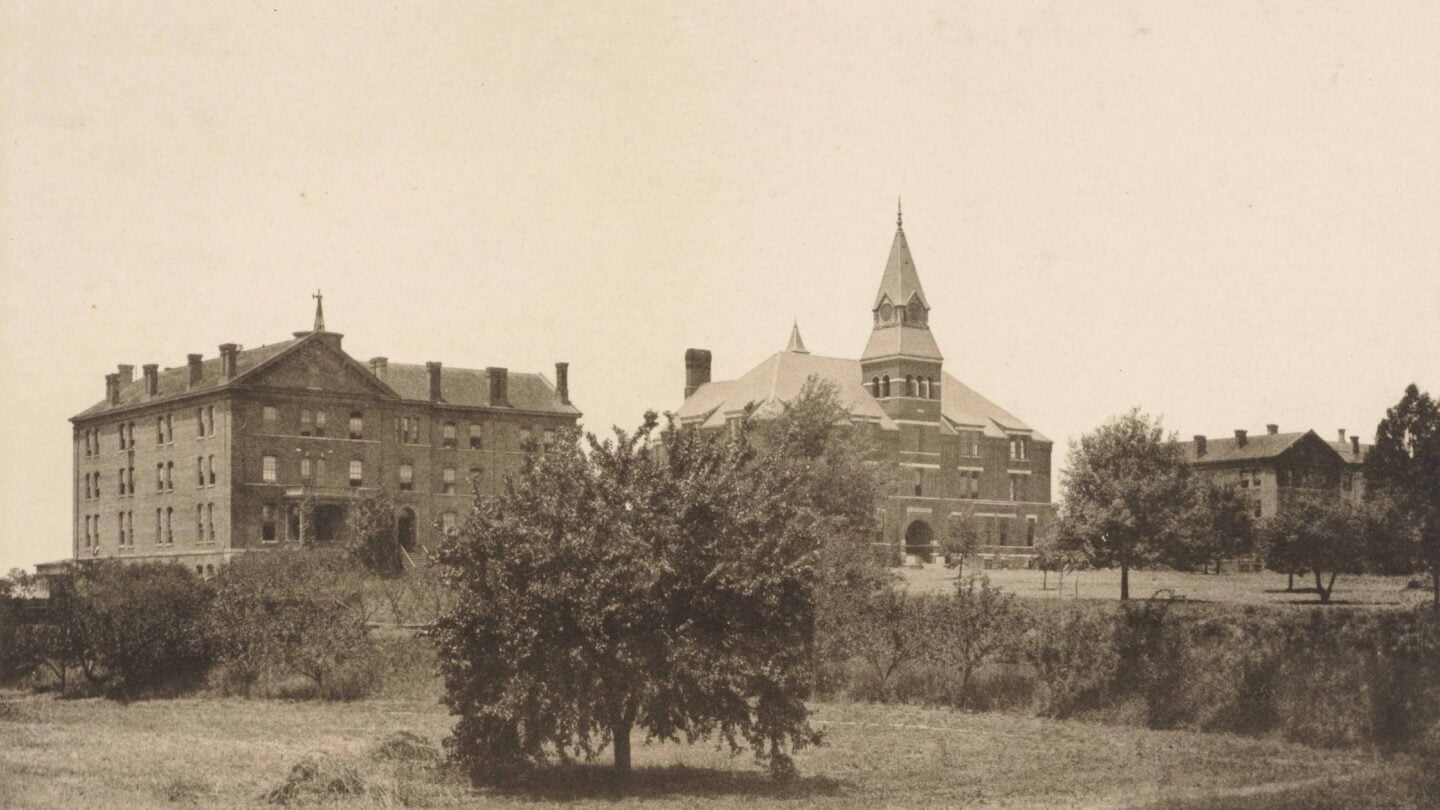
View of the main campus of Atlanta University, including Stone Hall, designed by Gottfried L. Norrman. Atlanta History Photograph Collection VIS 170.234.001
Atlanta was such a city, a growing metropolitan area with expanding industry and institutions. It was a logical choice to locate the largest complex of Historically Black Colleges and Universities in the nation. Within months of the Confederate surrender, Northern philanthropists and church organizations joined African American activists to provide education for freedmen of all ages. Over the next 16 years, they established Atlanta University (1865), Morehouse College (1867), Clark College (1869), and Spelman College (1881) on the west side of Atlanta.
Unique among the schools was Morris Brown College (1881), founded by African Americans affiliated with the African Methodist Episcopal (AME) Church. The AME Church was a linchpin abolitionist organization and after the Civil War sent missionaries south to build churches, schools, and communities, independent of white philanthropists.
The schools within the complex formed the Atlanta University Center consortium in 1929. The Interdenominational Theological Seminary (1958) and Morehouse School of Medicine (1974) joined later. Now a collaboration of four independent institutions, Atlanta University Center remains the largest consortium of African American private institutions of higher education in the world.
Home of an Activist Tradition
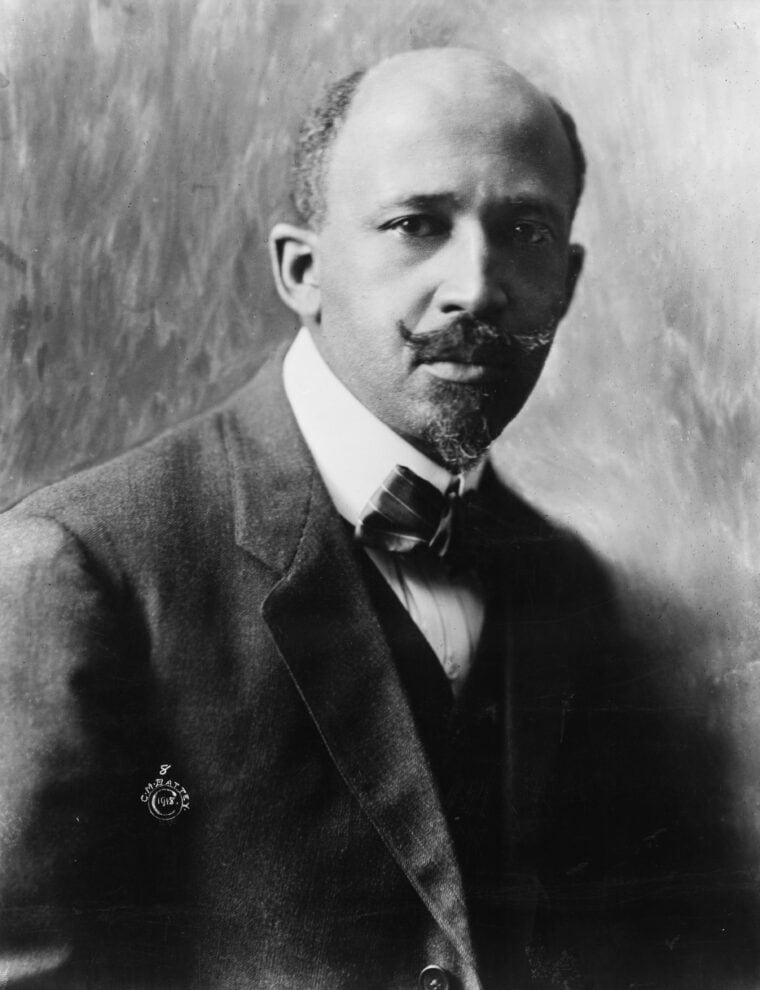
William Edward Burghardt (W.E.B.) Du Bois photographed by Cornelius Marion Battey. Washington, D.C., 1918. Courtesy Library of Congress Prints and Photographs Division, Photo no. cph.3a53178
Black political activism has long been rooted in the South. In 1881, the first domestic workers’ strike in the US took place in Atlanta. Eleven years later, Atlantans launched one of the first strikes to secure equal access to public transportation. These efforts were sparked by civil rights advocates throughout the area. In addition, the Atlanta University complex was a crucial center for organizing and training social justice activists.
When Dr. W.E.B. Du Bois started the Niagara Movement in 1905, he was among the most well-known and respected professors at Atlanta University. He spent 23 years teaching in Atlanta. Generations of students were trained in the new discipline of sociology under his direction. Using Atlanta as their laboratory, they explored the conditions of Black Atlantans and documented the impact of racial discrimination. Many became activists in Du Bois’ tradition.
Faculty and students pressed for full rights as American citizens.
At the same time, the schools’ leadership was concerned about appeasing socially conservative white benefactors. The mission to educate African Americans was radical in a region that offered scarce public education facilities for Blacks, relegating them to menial roles as a perpetual uneducated underclass.
Not only did Historically Black Colleges and Universities train a growing population of professionals to serve the Black community, they preached a philosophy of community accountability, encouraging students with mottos, such as “lifting as we climb,” “culture for service,” and “I’ll find a way or make one.”
The story doesn’t stop there. Explore stories of struggle, power, and perseverance in Atlanta and across the South contained in Black Citizenship in the Age of Jim Crow before it closes on February 28. College students will receive complimentary admission during the month of February.
This exhibition has been organized by the New-York Historical Society. Lead support for the exhibition provided by National Endowment for the Humanities: Exploring the human endeavor. Major support provided by the Ford Foundation and Crystal McCrary and Raymond J. McGuire. Lead local sponsors are The Rich Foundation, Victoria and Howard Palefsky, and The Thalia and Michael C. Carlos Foundation.


